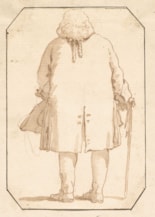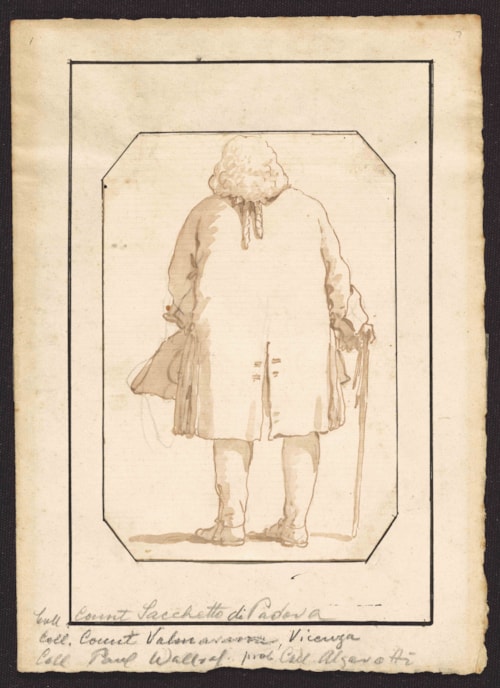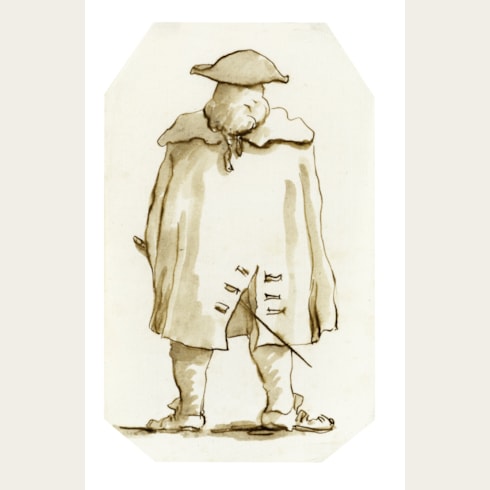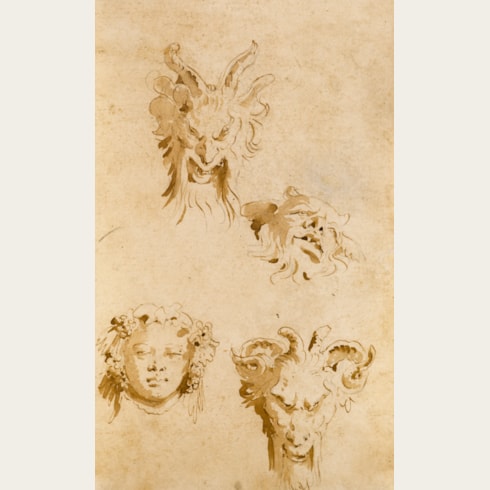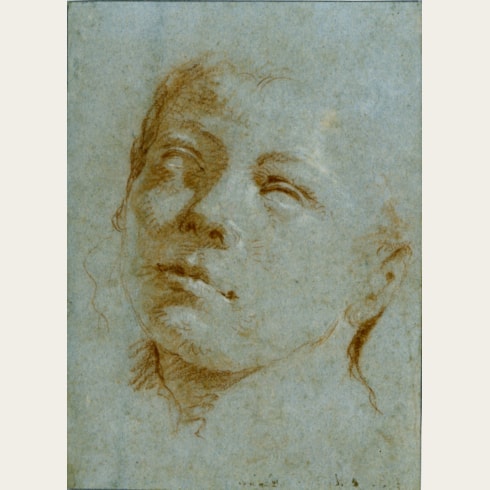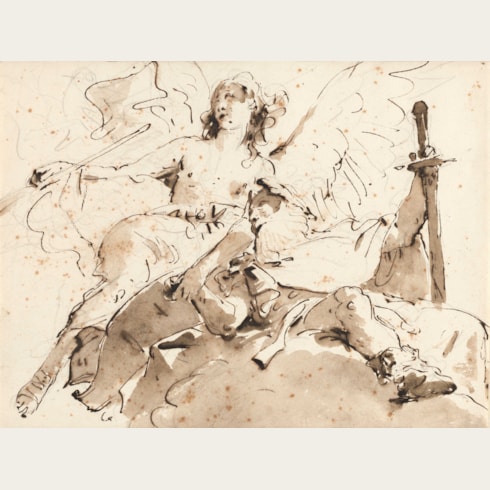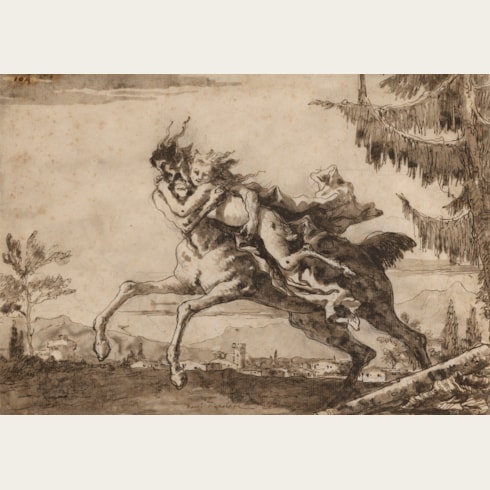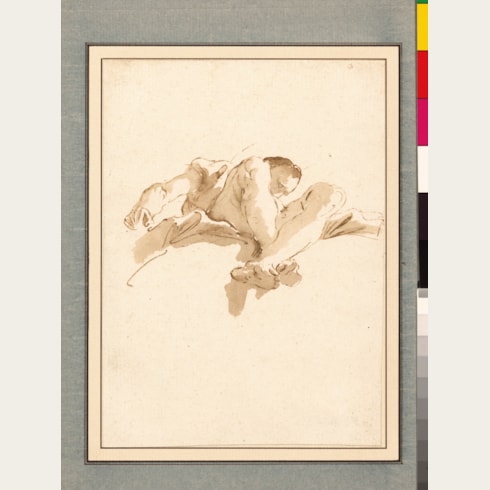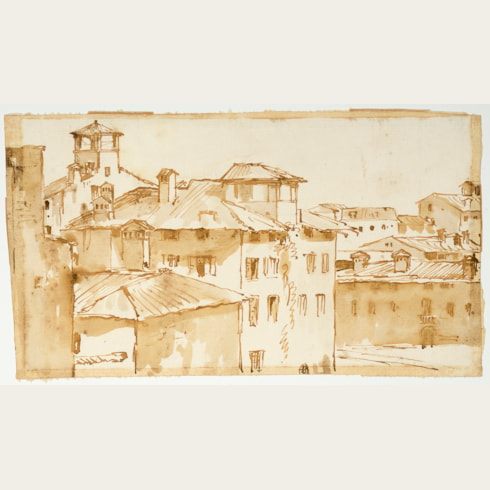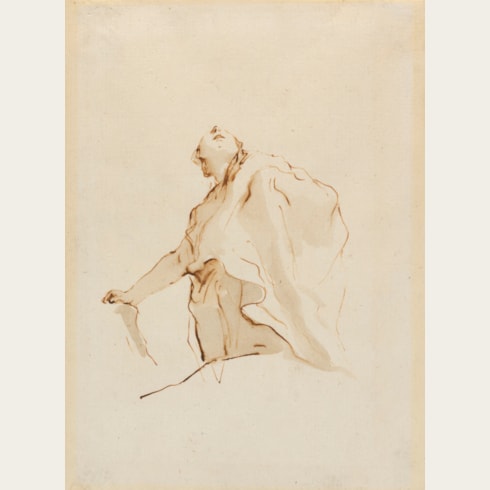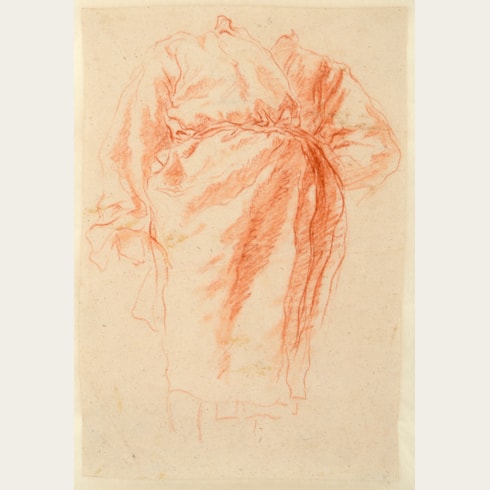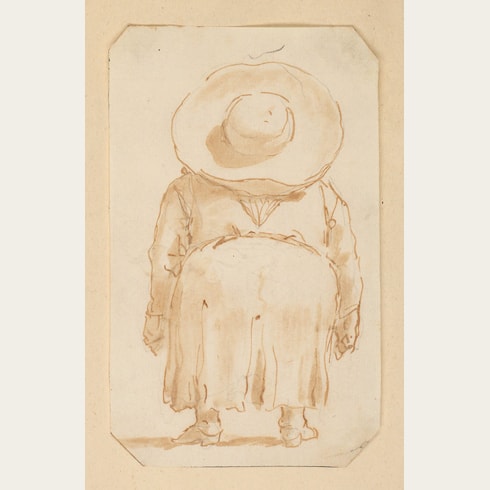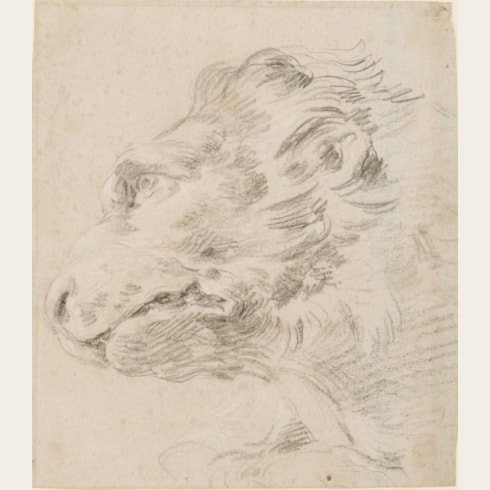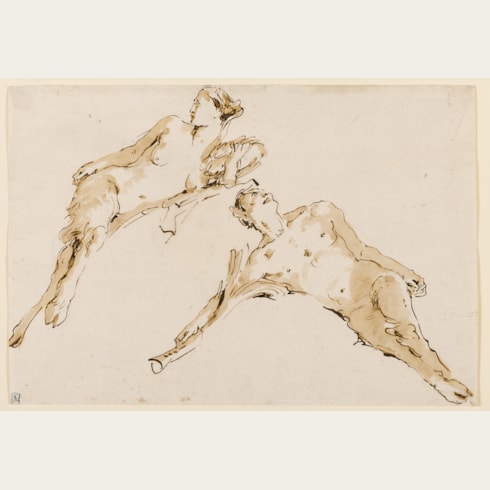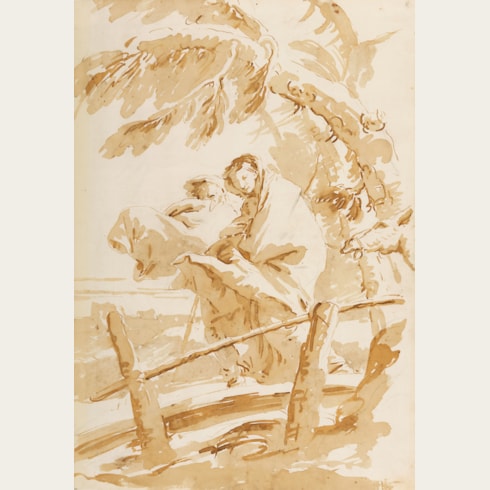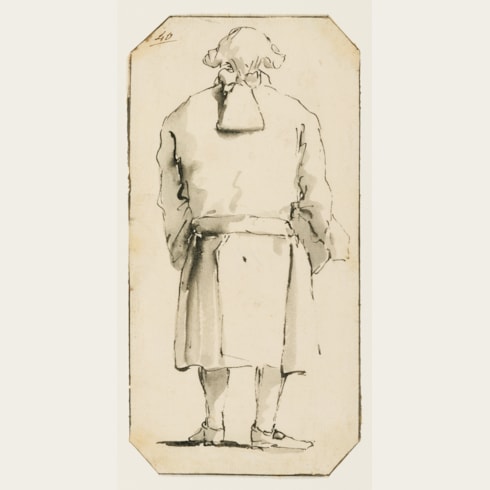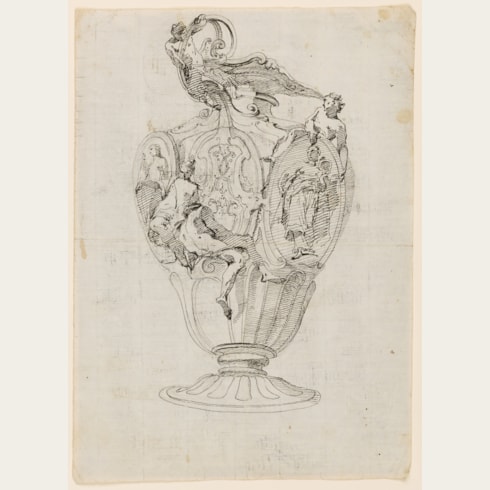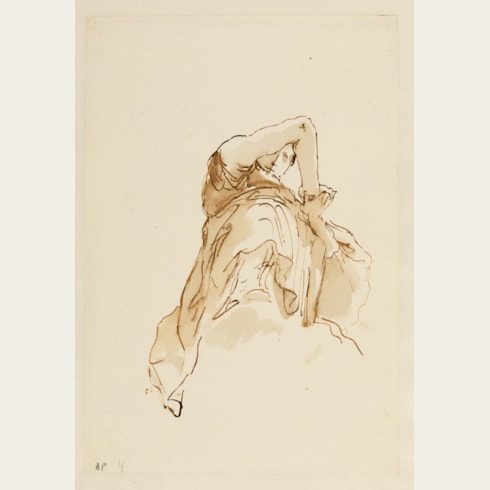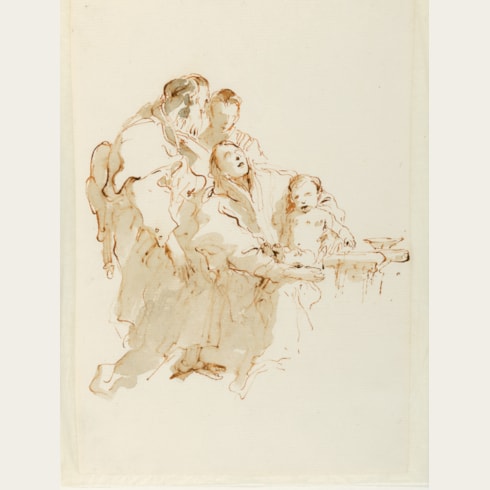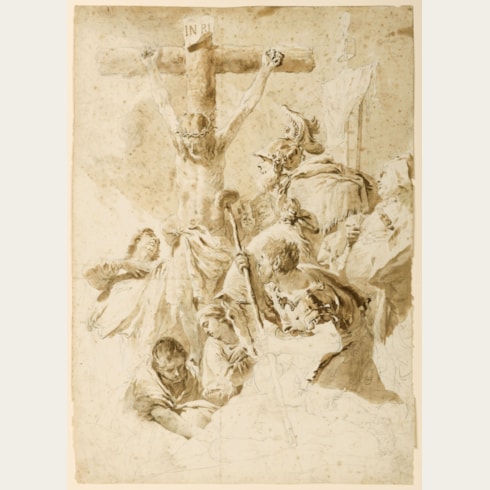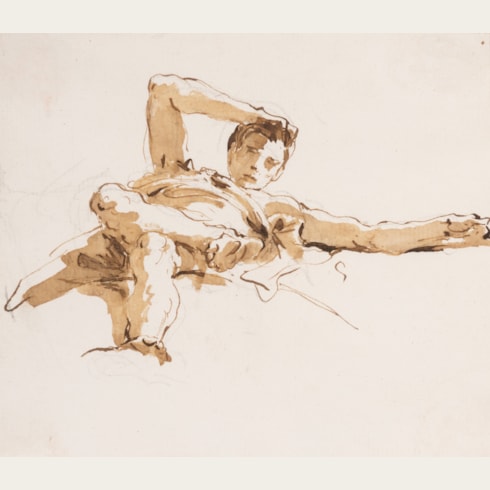Giovanni Battista TIEPOLO
(Venice 1696 - Madrid 1770)
A Caricature of a Man seen from Behind, with a Cane and Holding a Tricorne Hat
The corners of the sheet cut.
Inscribed Coll. Count Sacchetto di Padova/ Coll. Count Valmarana, Vicenza/ Coll. Paul Wallraf. prob. Coll. Algarotti at the bottom of the old album page on which this drawing is mounted.
156 x 107 mm. (6 1/8 x 4 1/4 in.)
This drawing may be presumed to have originated in the collection of the Conti Valmarana of Vicenza, which seems to have included a large number of Tiepolo caricatures. (It should be noted that both Giambattista and Domenico Tiepolo worked at the Valmarana family villa in Vicenza in 1757.) The caricature drawings associated with the Valmarana collection are, for the most part, depictions of single figures, with most seen from behind, and all have cut corners. Thirty-two of the caricatures from the Valmarana collection were acquired at an unknown date before 1959 by the dealer and collector Paul Wallraf (1897-1981)3, and of these, fifteen examples are today in the Robert Lehman Collection at the Metropolitan Museum of Art in New York.
Giambattista Tiepolo’s caricatures seem to have been done for his own amusement, and also – albeit perhaps incidentally - as a source of figural types for his sons. These delightful drawings, in the words of one scholar, ‘call for no elaborate explanations – they are so simple and direct they speak for themselves. I do not fancy that they served any directly useful purpose or that they were ever intended as notes or sketches for larger or more important undertakings...They are the fruit of the artist’s leisure hours, the work of a man for whom the act of drawing was always the source of the keenest of pleasures...they are the work of a man who was the most gifted artist of his generation and are the outcome of that same calligraphic skill and acute observation that contributed so largely to the success of his major achievements.’
In these charming works, Tiepolo may have been inspired by the caricature pen drawings of 17th century artists such as Annibale Carracci, Pier Francesco Mola and Guercino, while older contemporaries such as Pier Leone Ghezzi in Rome and Marco Ricci and Anton Maria Zanetti in Venice also produced caricature drawings. However, Tiepolo tended not to introduce into his drawings the unsympathetic and often malicious inferences typical of the caricatures of these earlier artists.
As one scholar has noted, ‘Often a Tiepolo caricature will evoke a kindly smile; at other times, compassion or curiosity. Whatever the response, however, the artist’s most poignant images are to be found among his caricatures. The compromise between style, license, and observation which they represent opened caricature fleetingly to a new expressiveness, a glimpse of a loftier mode of feeling.’
The leading painter in Venice for much of his career, Giambattista Tiepolo was also undoubtedly one of the finest Italian draughtsmen of the 18th century. That his drawings were greatly admired in his lifetime is confirmed by contemporary accounts; indeed, as early as 1732 the writer Vincenzo da Canal remarked that ‘engravers and copyists are eager to copy his works, to glean his inventions and extraordinary ideas; his drawings are already so highly esteemed that books of them are sent to the most distant countries’. From the late 1730’s until his departure for Spain in 1762, Tiepolo enjoyed his most productive period as a draughtsman, creating a large number of vibrant pen and wash studies that are among the archetypal drawings of the Venetian Settecento. As one recent scholar has commented, ‘From the start of his career [Tiepolo] had enjoyed drawing as an additional means of expression, with equally original results. He did not draw simply to make an immediate note of his ideas, nor to make an initial sketch for a painting or to study details; he drew to give the freest, most complete expression to his genius. His drawings can be considered as an autonomous artistic genre; they constitute an enormous part of his work, giving expression to a quite extraordinary excursion of the imagination; in this respect, Tiepolo’s graphic work can be compared only with that of Rembrandt.’
Tiepolo’s drawings include compositional studies for paintings and prints, drawings of heads, figure studies for large-scale decorations, landscapes and caricatures, as well as several series of drawings on such themes as the Holy Family. Many of these drawings were bound into albums by theme or subject, and retained by the artist in his studio as a stock of motifs and ideas for use in his own work, or that of his sons and assistants.
Provenance
The Conti Valmarana, Vicenza
Paul Wallraf, Paris and London
Galerie Pardo, Paris
Purchased from them in 1972 by Eileen and Herbert C. Bernard, New York.


